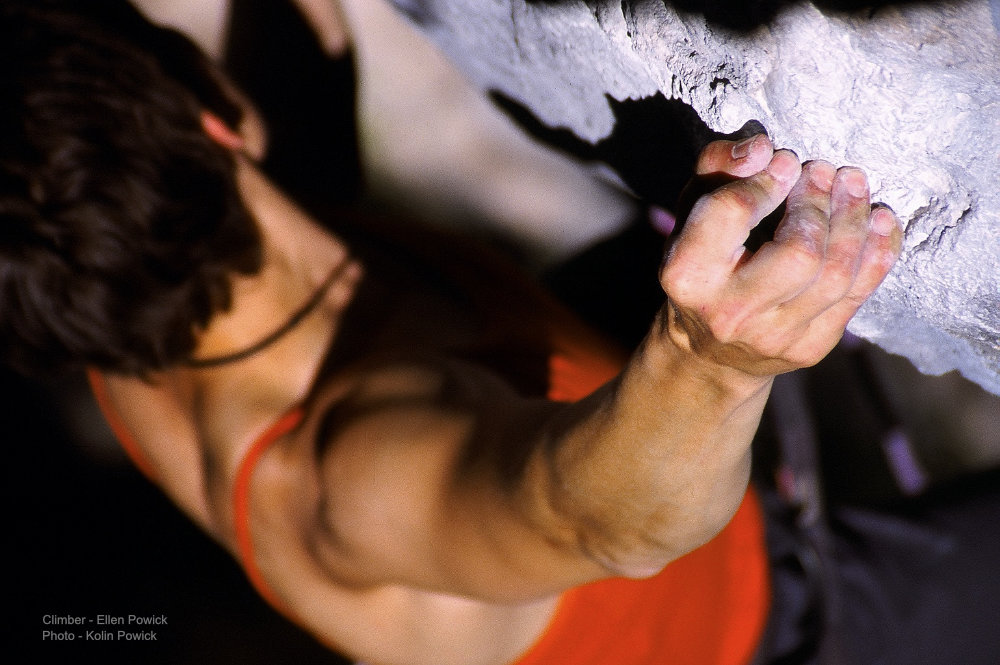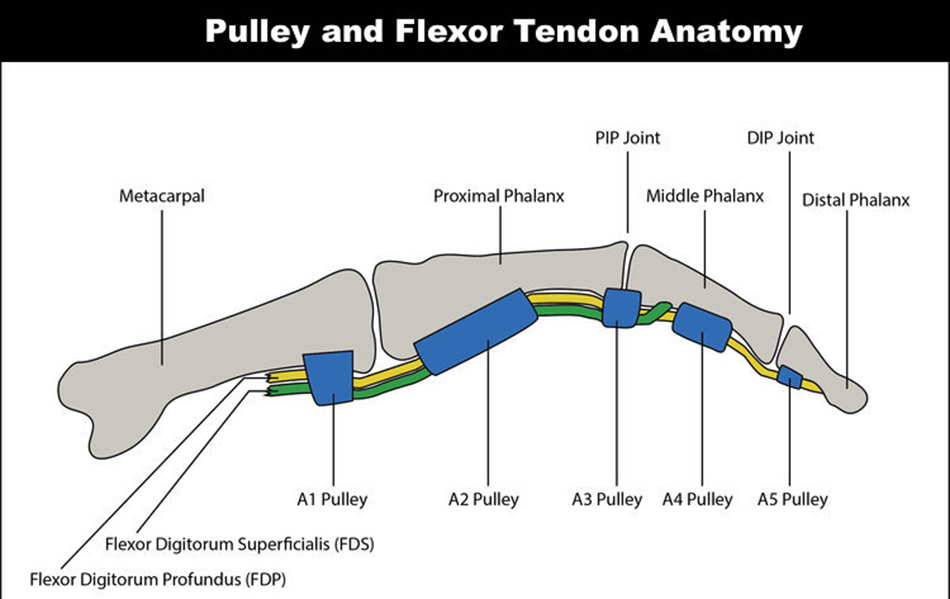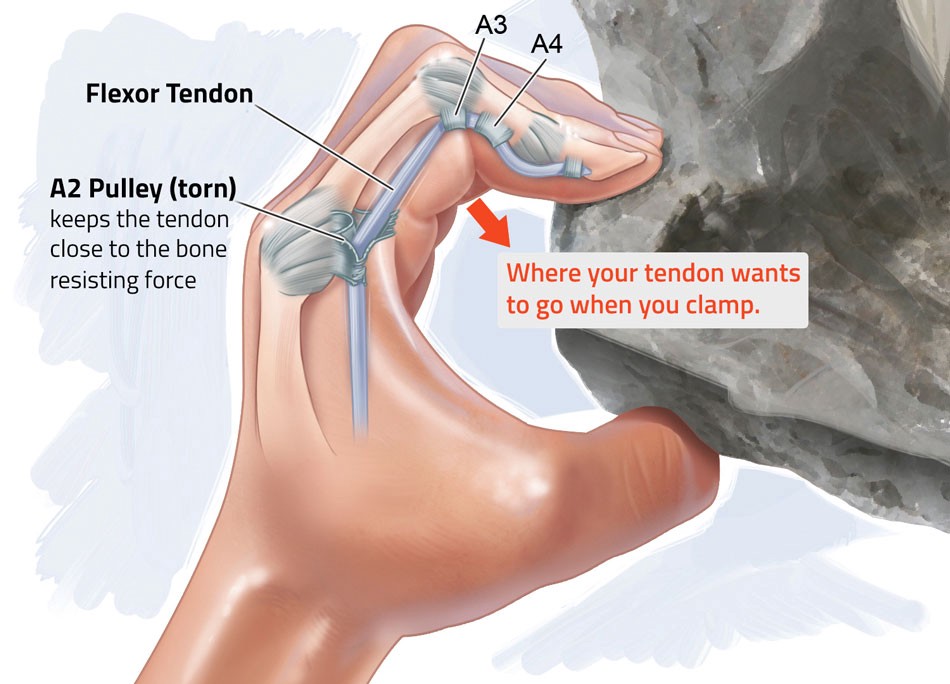Dealing With Climbing’s Most Common Injuries – Part 1
With the spring climbing season ramping up, many climbers are training harder on plastic and pushing their limits on the rock. Unfortunately, this combination frequently results in one of climbing's most common injuries – an A2 pulley strain or rupture.
To better understand and prevent this climbing injury, we caught up with Dr. Lisa Liang, a CASEM certified Sports Medicine Specialist and Family Physician. In this article (the first of a three-part series), Dr. Liang discusses how this injury occurs, offers tips on prevention and treatment, and debunks the myth about preventative taping.
To better understand and prevent this climbing injury, we caught up with Dr. Lisa Liang, a CASEM certified Sports Medicine Specialist and Family Physician. In this article (the first of a three-part series), Dr. Liang discusses how this injury occurs, offers tips on prevention and treatment, and debunks the myth about preventative taping.
-

Dealing With Climbing’s Most Common Injuries – Part 1
What is affected?
- Flexion tendon pulleys are bands of tissue that hold the tendons in your finger to the bone. This tissue allows your finger to bend at various joints.
- The A2 pulley is attached to the bone at the base of your finger (aka the proximal phalanx).
- From a climber's perspective, the A2 is the most important pulley as it supports the highest loads. A2 pulley injuries are the most common injury for rock climbers.
-

Pulley and flexor tendon anatomy. Image by Will Anglin, www.tensionclimbing.com/a-comparative-review-of-pulley-injury-literature
How does this injury happen?
- The A2 pulley is affected with force applied through the fingertip.
- The risk of injury is increased when using a crimp grip or doing any weighted training (wearing a weight vest).
- Climbers most commonly injure the ring finger.
-

Climbing A2 pulley tear. Image by Steve Graepel, ww.rockandice.com
What are the symptoms?
- Climbers may hear or feel a popping sensation through the affected finger.
- There will be swelling, bruising, redness and pain at the base of the finger.
- There will also be an inability to flex the finger fully (bowstringing).
Partial tears can typically be managed conservatively with H-taping. This should be supplemented with physiotherapy focused on early range of motion and followed by gradual loading.
How is it diagnosed?
- A clinical examination with ultrasound/dynamic ultrasound can accurately diagnose the injury.
- An X-ray may be necessary to rule out injury to the bone.
How is it treated?
- Climbers need to stop climbing immediately. They should rest the hand, ice the injured finger and see a physician within the week.
- Partial tears can typically be managed conservatively with H-taping. This should be supplemented with physiotherapy focused on early range of motion and followed by gradual loading.
- Tears greater than 60% usually require surgery followed by rehabilitation. Surgery and rehabilitation will also be needed if conservative treatments fail or there is persistent finger triggering.
How can I prevent A2 pulley injuries?
- When training, strive to increase the load gradually. This conservative approach minimizes the risk of pulley strains.
- Work on lower body strength and footwork. The resulting stability gains will prevent slipping and sudden loading to the fingers.
- Spend time improving your overall climbing movement/technique. This helps decrease over-gripping and reduces the risk of injury.
- Finally, there is no evidence for taping as prevention. In a small study of 16 climbers by Schweizer in 2000, circular taping around the A2 pulley and over the distal phalanx was only minimally effective in preventing pulley ruptures.
References:
- Crowley TP. The flexor tendon pulley system and rock climbing. J Hand Microsurg. 2012 Jun; 4(1):25-9.ss
- Schweizer A. Biomechanical effectiveness of taping the a2 pulley in rock climbers. The Journal of Hand Surgery. March 2000. British & European Volume 25(1):102-7
- Kubiak EN, Klugman JA, Bosco JA. Hand injuries in rock climbers. Bull NYU Hosp Jt Dis. 2006;64(3-4):172-7. PMID: 17155926.
Join the discussion of this and other climbing related stories at www.ontarioclimbing.com/forum/

Dr. Liang is involved in medical education, leadership roles, patient education and research, and has interests in exercise as medicine, sports nutrition and performance arts medicine. She has worked with various Varsity Blues teams as well as the National Ballet of Canada, the 2015 Pan Am Games, the Mississauga Steelheads, the Around the Bay Road Race and the Toronto Rock Lacrosse team. She is currently the Company Physician for Canada's Ballet Jörgen.
Dr. Liang lives with her husband and two sons in Burlington. In her spare time, she loves being active (doing hot yoga, step aerobics, cycling and climbing), playing trumpet and piano, reading sci-fi novels, cooking and travelling. You can follow her on Instagram @drliangsportsmed.




